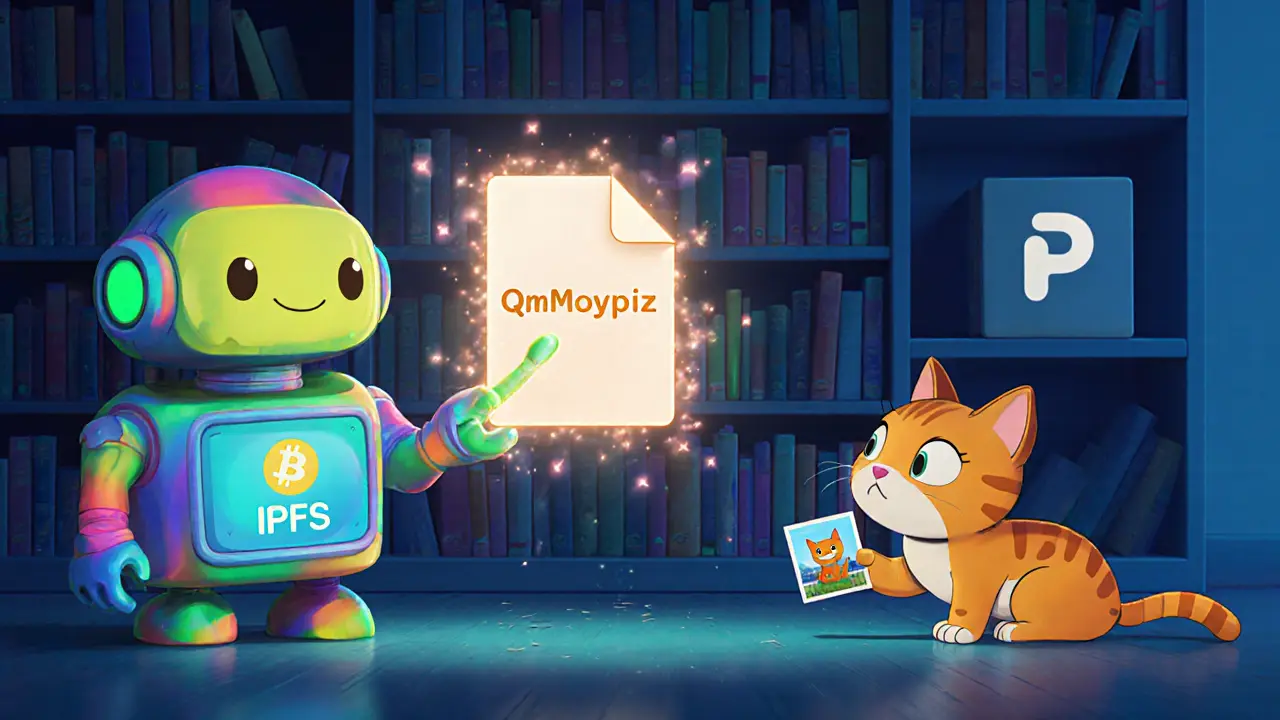IPFS: What It Is and How It Powers Decentralized Crypto Projects
When you store data on the internet, you’re usually saving it on a server owned by a company like Google or Amazon. But IPFS, the InterPlanetary File System, is a peer-to-peer network that stores and shares files without relying on central servers. Also known as InterPlanetary File System, it lets you access content by what it is, not where it’s located — a game-changer for blockchain and Web3. Think of it like BitTorrent for everything: instead of downloading a file from one place, you pull pieces from anyone who has it. No single point of failure. No corporate gatekeeper. That’s why projects building on Sui, Solana, or Binance Smart Chain use IPFS to host NFT metadata, DeFi interfaces, and even entire websites.
IPFS doesn’t store data the way you’d store a photo on your phone. It gives each file a unique hash — a digital fingerprint — and that hash becomes the address. If you change one pixel in an image, the hash changes. If someone deletes the original file, the hash still works as long as at least one node on the network still has it. This is why Filecoin, a blockchain built to incentivize storage providers to host IPFS data exists — it pays people to keep files alive. Without Filecoin, IPFS would be unreliable. With it, crypto projects can guarantee their content stays up, even if the original developer vanishes. That’s crucial for NFTs, where losing the image or video means the token becomes worthless.
IPFS also solves a bigger problem: censorship. If a government shuts down a website, the URL dies. But if that site was hosted on IPFS, you can still access it using the hash — even if your ISP blocks it. That’s why decentralized exchanges, DAOs, and crypto news sites like Add-On Con use IPFS for critical pages. It’s not just tech for tech’s sake. It’s about keeping information free and permanent. And because IPFS works with any blockchain, it’s everywhere: in your favorite meme coins, DeFi protocols, and even crypto tax tools.
What you’ll find in this collection isn’t just theory. These are real-world examples: how a meme coin’s image is stored on IPFS, why a DEX’s frontend runs on it, how airdrop claim pages stay live forever. You’ll see how IPFS connects to tokenomics, exchange infrastructure, and even crypto mining regulations — because if data isn’t stored right, the whole system breaks. Whether you’re holding a token, trading on a DEX, or just trying to understand why your NFT image still loads after the project’s site vanished, IPFS is the quiet engine behind it all.
IPFS vs Arweave vs Filecoin: Which Decentralized Storage Solution Fits Your Needs?
IPFS, Arweave, and Filecoin offer different ways to store data on the blockchain. IPFS is fast but temporary, Filecoin is flexible but requires ongoing payments, and Arweave offers permanent storage with a one-time fee. Here's how to choose.
- 13
- Read More
